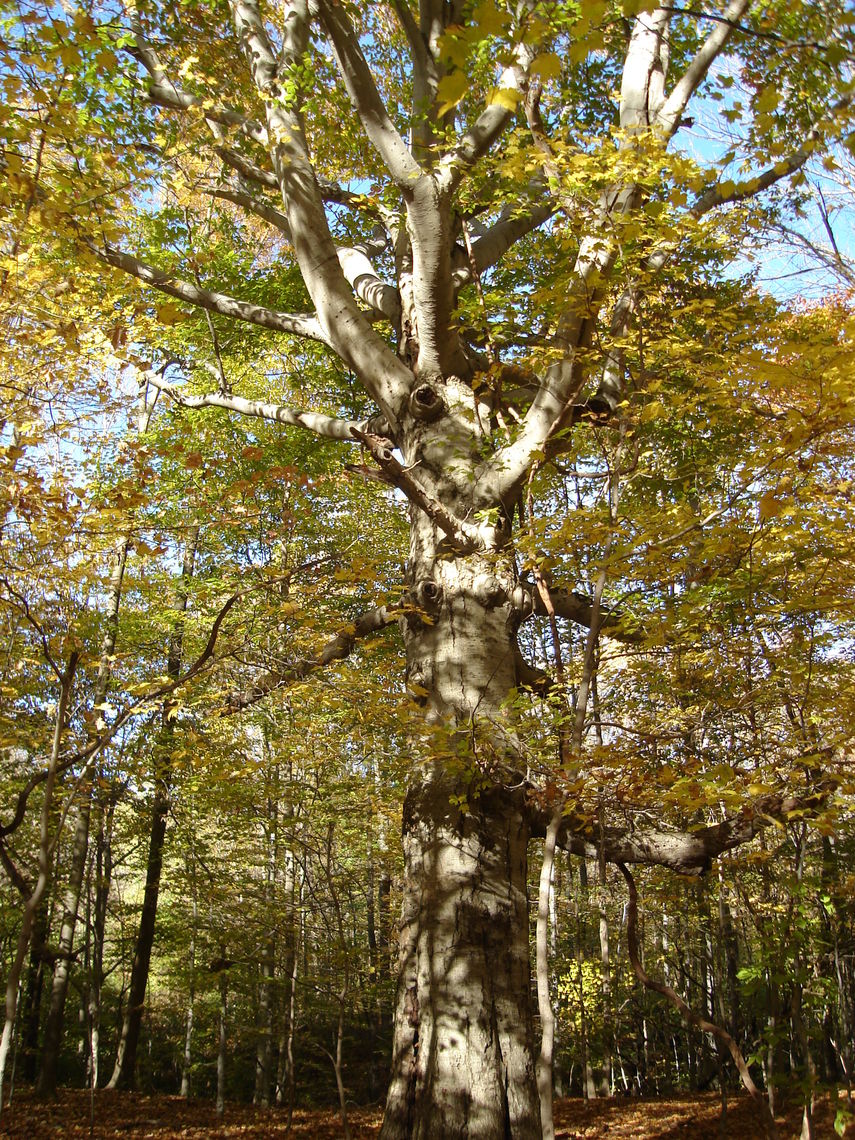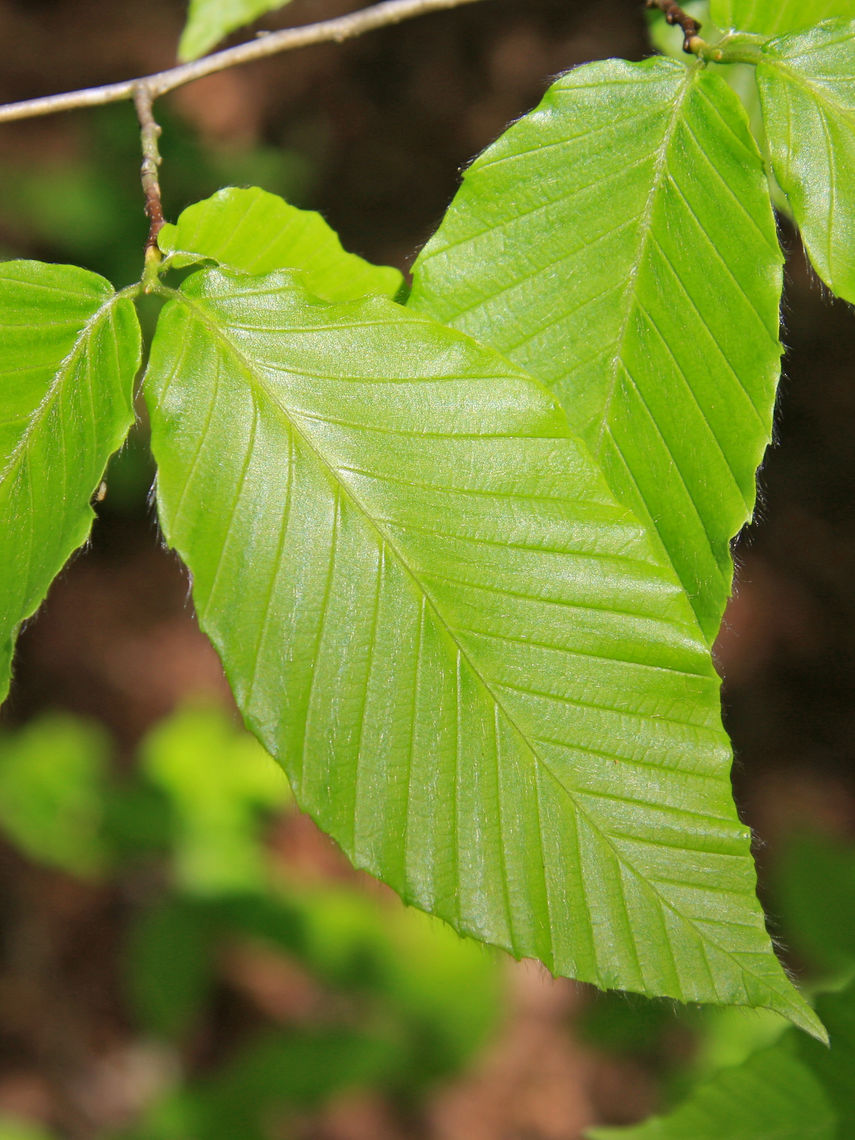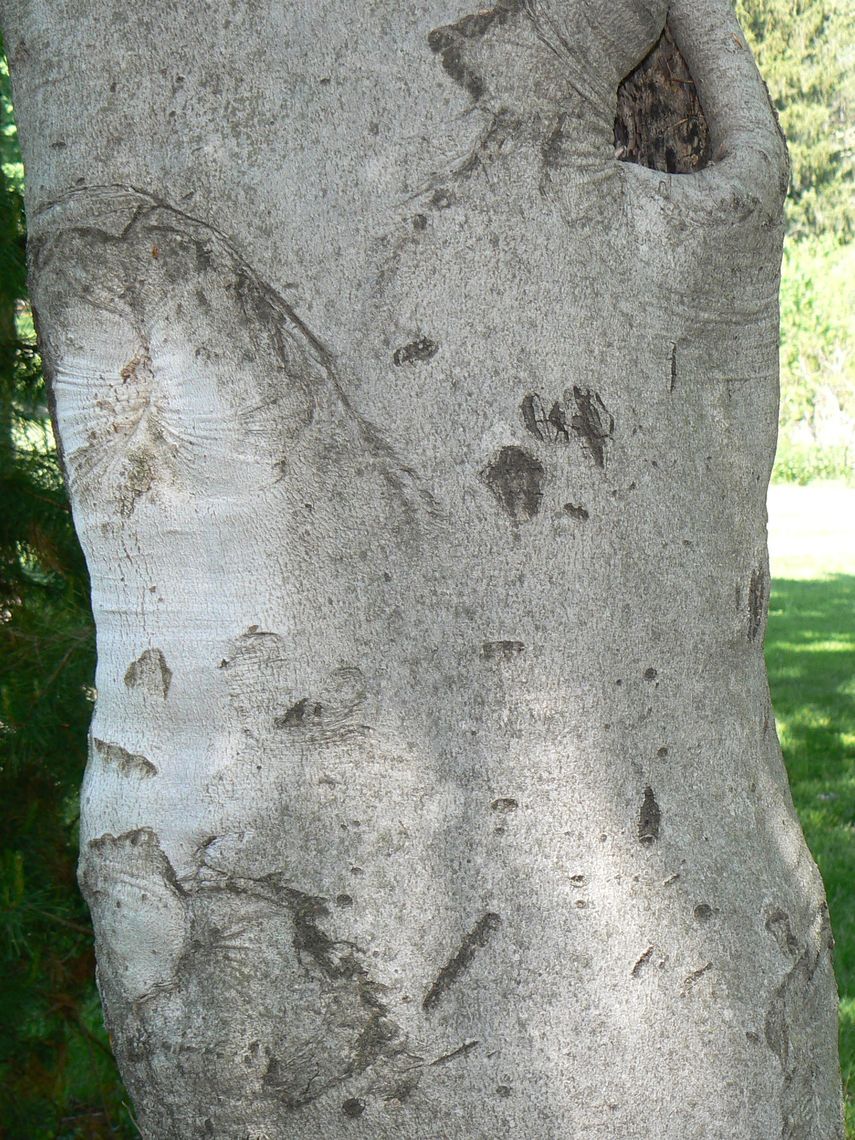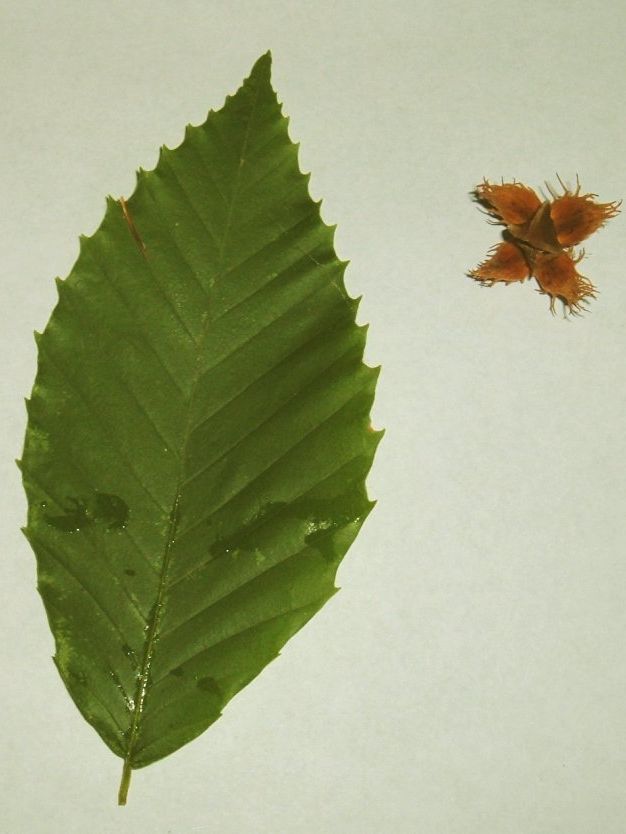American Beech (Fagus grandifolia)
The american beech has toothed, tear-shaped leaves that have perfectly straight, and very prominent veins. These leaves turn yellow in the fall. The tree produces edible triangular nuts, which are encased in a spiky shell. Its bark is smooth and of a silvery-gray color, which stands out beautifully in a snow covered landscape. This tree attracts small mammals and birds.
Family: Fagaceae (Beech)
Characteristics: The 2-5 inch long leaves are ovate to elliptic, toothed, glossy, dark green, and have very prominent and perfectly straight veins. In the fall, leaves turn yellow to a golden brown. In April-May, small yellow-green flowers begin to bloom. Male flowers are drooping and long-stemmed, and female flowers appear as short spikes. These flowers give way to triangular nuts, which are encased by a spiky outer shell. Beechnuts ripen in the fall and are edible. Bark is silvery-gray. This tree is very dense and has an upright-oval to rounded shape. It grows 50-70 feet high and wide.
Foliage: Deciduous (leaves lost seasonally)
Geographic Origin: Eastern North America (native)
Cultivation Notes: Requires low maintenance. Does best in full sun to part shade. Prefers acidic, moist, and well-drained soils. Wet and poorly drained soils should be avoided.
Number on Campus: 2
Sources: Dirr, Morton Arboretum, Missouri Botanical Garden





